Hello! If you're looking to navigate the often complex process of land acquisition, you're in the right place. This letter template will guide you in crafting a clear and concise notification that meets all necessary legal requirements. Whether you're a government agency or a private entity, ensuring that your message is professional yet approachable is key. Ready to delve into the details of effective land acquisition notifications? Let's get started!

Property Details
The land acquisition notification outlines essential details regarding property located in Greenville Township, situated near the junction of Maple Avenue and Oak Street. The parcel spans approximately 5 acres (0.02 square kilometers), identified by tax parcel number 123-456-789. The estimated fair market value of the property is $500,000, based on recent appraisals comparable to local market trends. This acquisition is aimed at facilitating the upcoming infrastructure project, including a planned community park and access road improvements, which are set to commence in early 2024. Nearby landmarks include the Greenville Public Library and the Riverside Community Center, emphasizing the area's significance for community enhancement. All affected property owners will receive further details regarding compensation and acquisition procedures in compliance with the Uniform Relocation Assistance and Real Property Acquisition Policies Act.
Purpose of Acquisition
The land acquisition process, essential for various development projects, often highlights specific purposes that drive the need for such actions. Urban expansion requires acquiring plots for residential zones, aiming to accommodate a growing population in cities like Atlanta, Georgia. Infrastructure improvements, such as building highways or railroads, necessitate land for public transportation projects in metropolitan areas, stimulating economic growth and connectivity. Environmental preservation efforts may lead to acquiring parcels of land to create parks or conservation areas, ensuring the protection of ecosystems. Furthermore, public facilities such as schools or hospitals may also trigger land acquisition, addressing community needs for essential services and resources in underserved neighborhoods. Each acquisition effort must follow legal protocols, ensuring transparency and community engagement throughout the process.
Compensation and Valuation
Land acquisition notifications often involve complex communications regarding compensation and valuation processes, which can significantly impact property owners. When local government entities or organizations notify stakeholders about upcoming land acquisitions, clarity in explaining valuation methodology is essential. The authority typically includes the compensation amounts determined through various assessments, which consider market value evaluations, recent local sales data, and any improvements or unique features of the land (examples include zoning benefits, agricultural status, or environmental assessments). The notification also typically highlights timelines for claiming compensation, signifies points of contact for inquiries, and provides information regarding the grievance redressal mechanism. Ultimately, these details ensure transparency and assist landowners in understanding their rights and the compensation to be received for their property during mandatory acquisition processes.
Legal References
Land acquisition notifications are critical in real estate transactions, governed by various legal frameworks. The Indian Land Acquisition Act of 2013 outlines procedures for acquiring land for public purposes, emphasizing compensation and rehabilitation. Specific sections, such as Section 4, detail the preliminary notification of intent to acquire land, while Section 11 describes the process for calculating and offering compensation to affected landowners. Additionally, the Right to Fair Compensation and Transparency in Land Acquisition, Rehabilitation and Resettlement Act ensures that landowners are informed about their rights and entitlements. State-specific amendments may also apply, reflecting local regulations and policies regarding land acquisition. Understanding these legal references is vital for ensuring compliance and protecting stakeholders' interests throughout the acquisition process.
Contact Information
Land acquisition notifications often require precise contact information for communication purposes. This includes the name of the person or agency responsible for the notification, such as a city planning department or a land development organization. A valid phone number, including the area code, ensures immediate accessibility (commonly a 10-digit format in the United States). An email address provides a digital means of communication for detailed inquiries, often formatted with the person's name or department followed by the organization's domain. Additionally, the physical address, including street number and name, city, state, and zip code, establishes the location for any official correspondence or meetings. Providing this information clearly and accurately aids in effective communication during the land acquisition process.
Letter Template For Land Acquisition Notification Samples
Letter template of land acquisition correspondence for environmental assessment
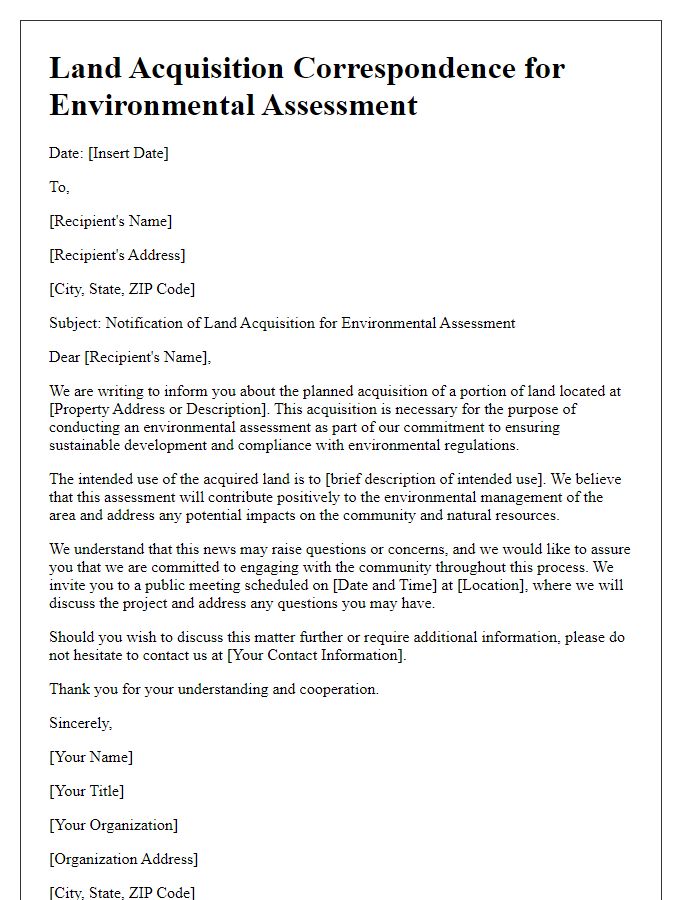

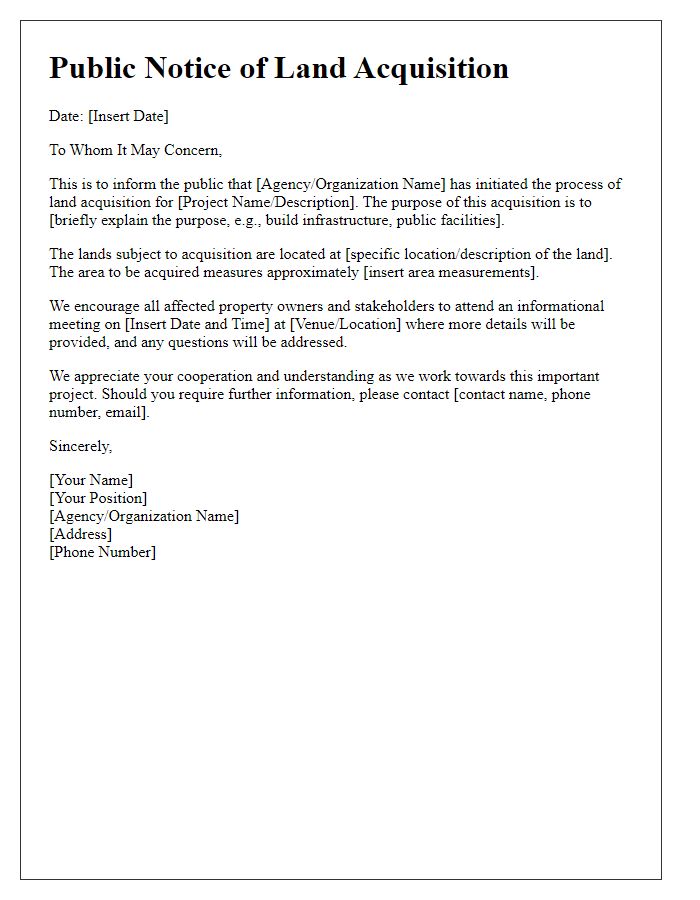
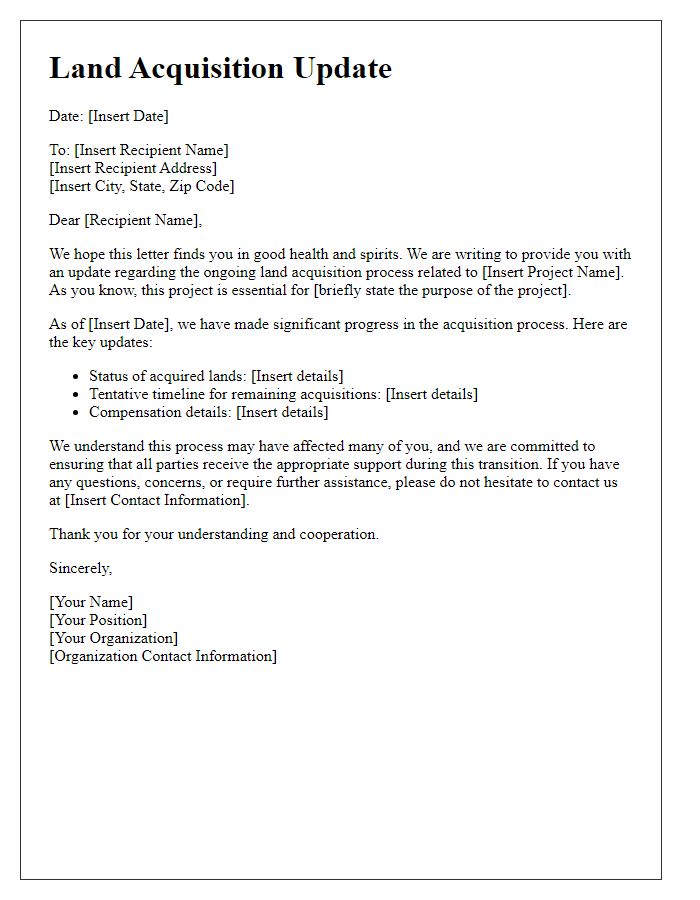
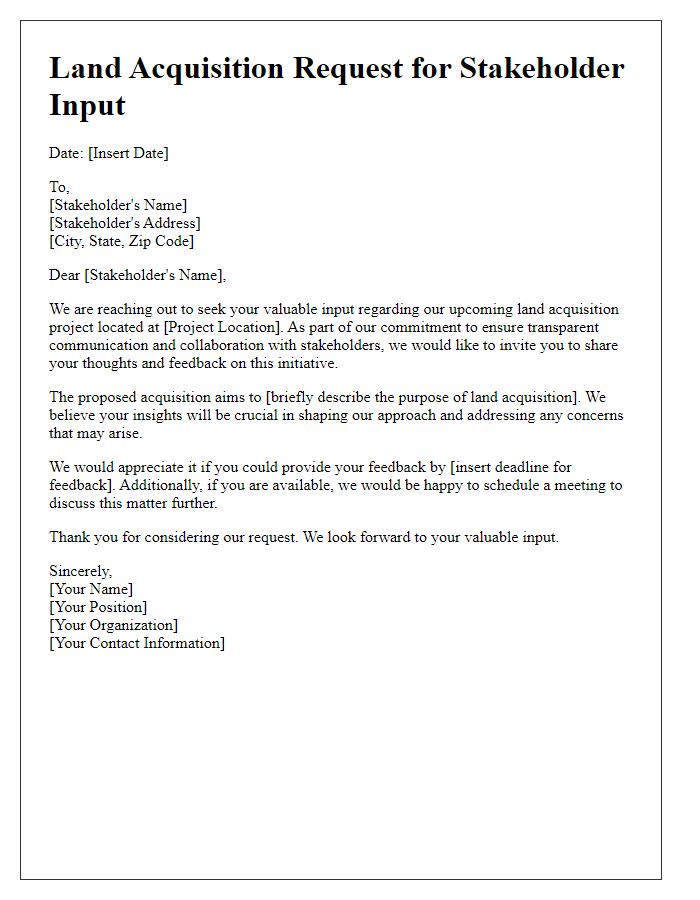
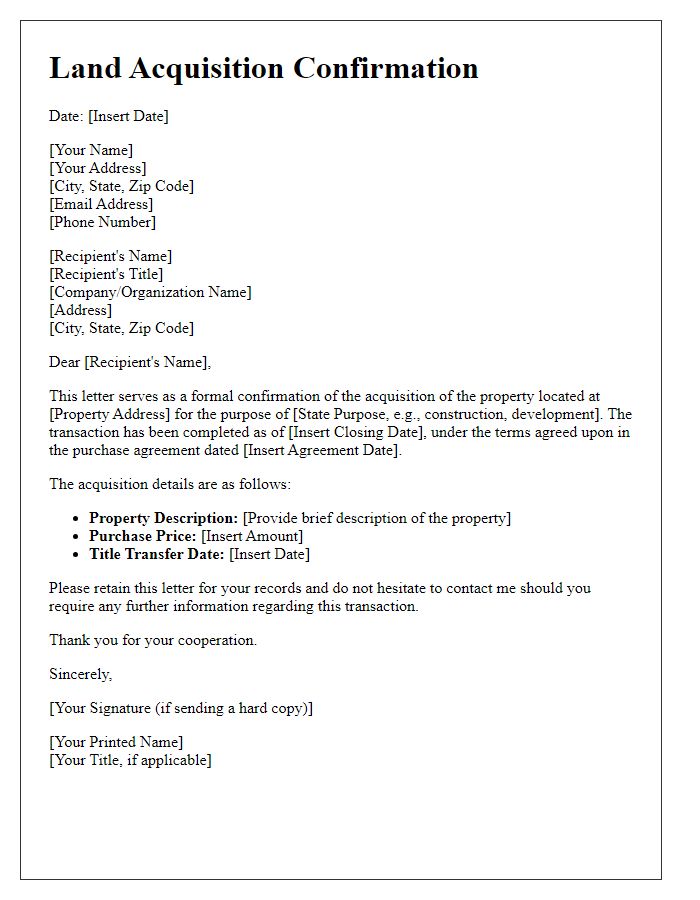
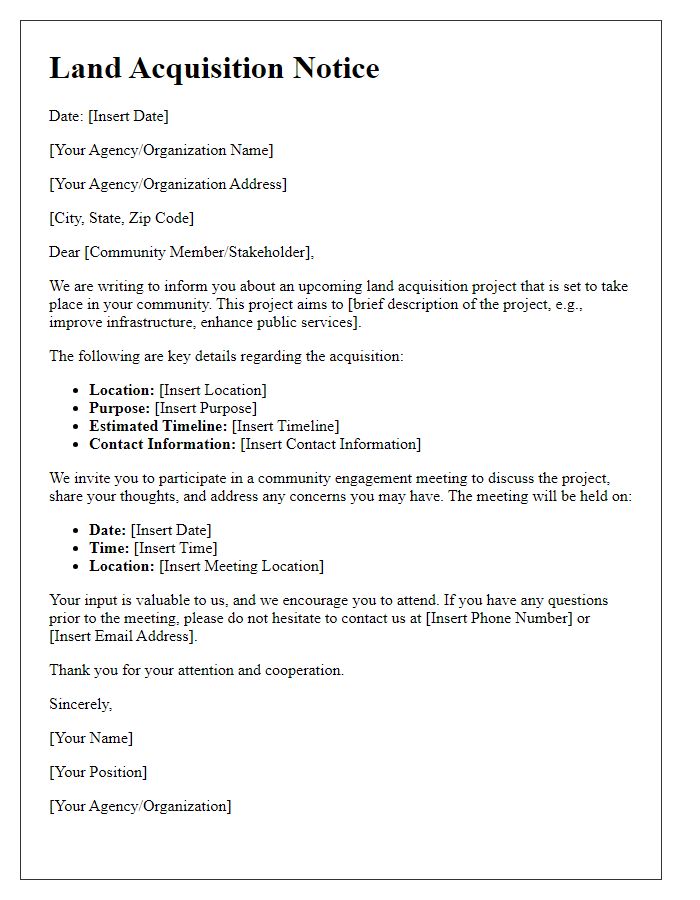
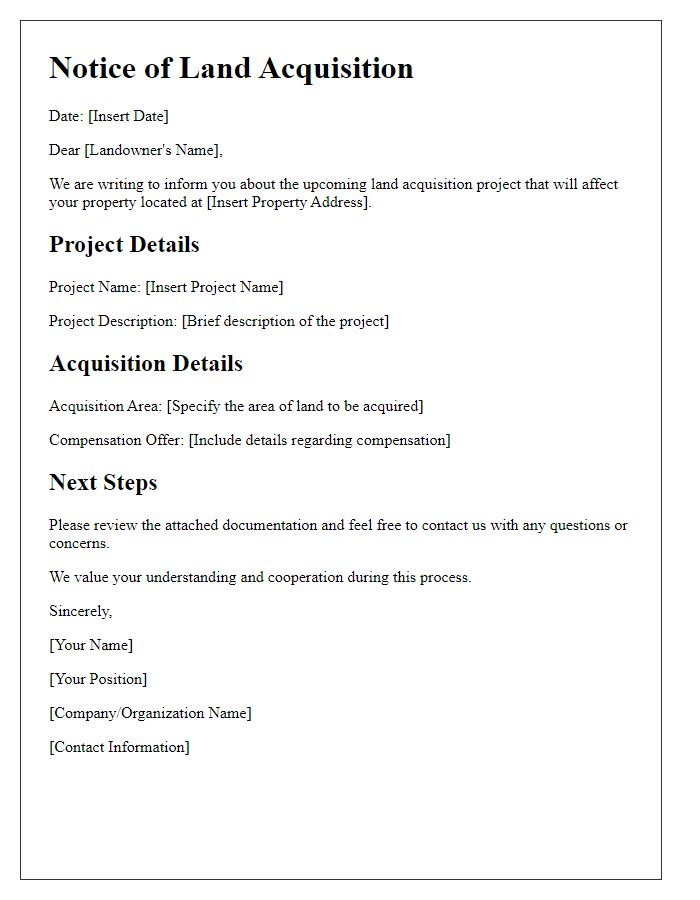
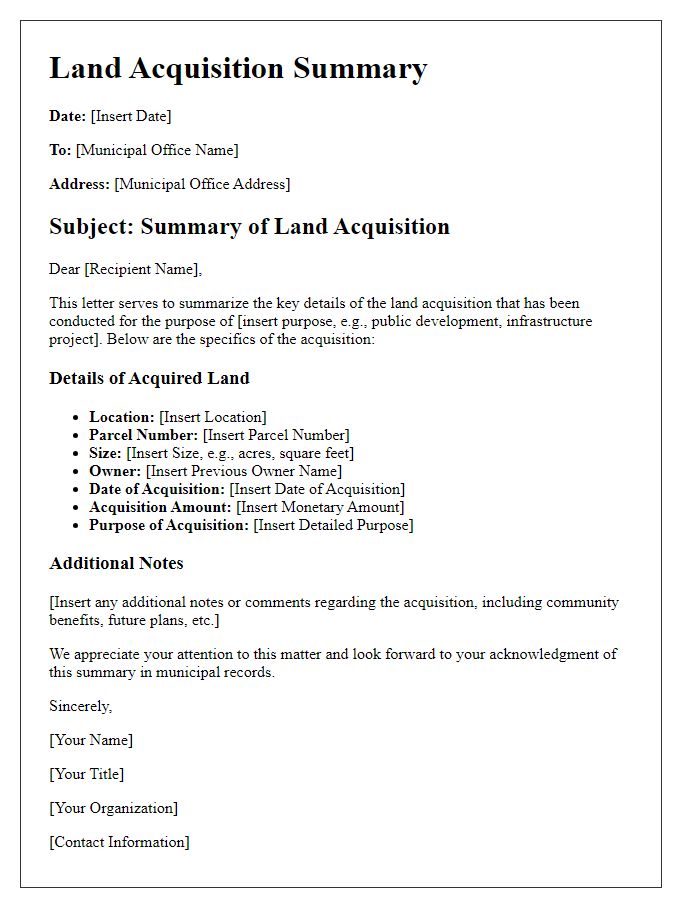
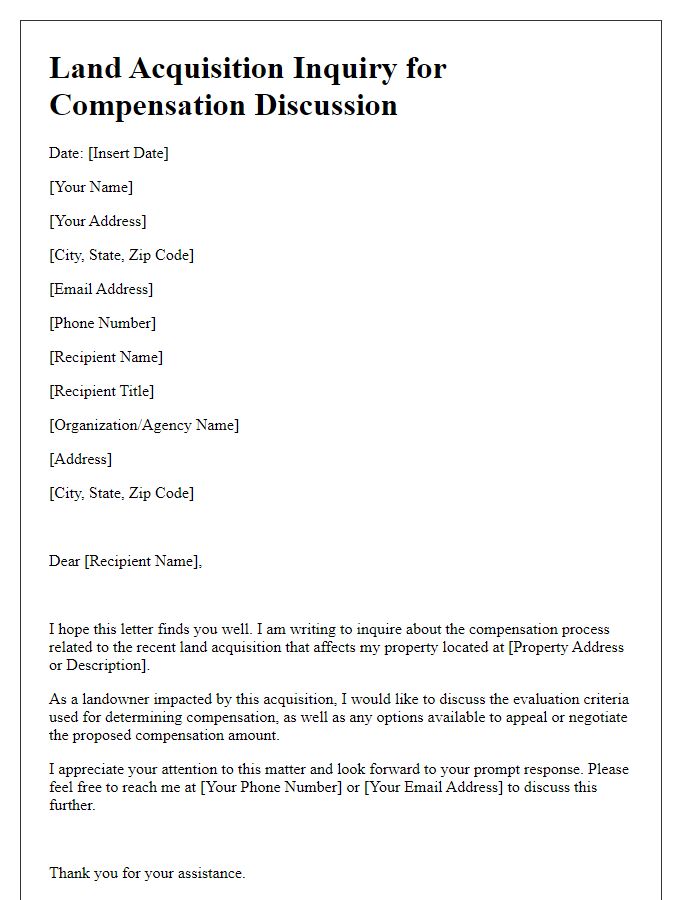
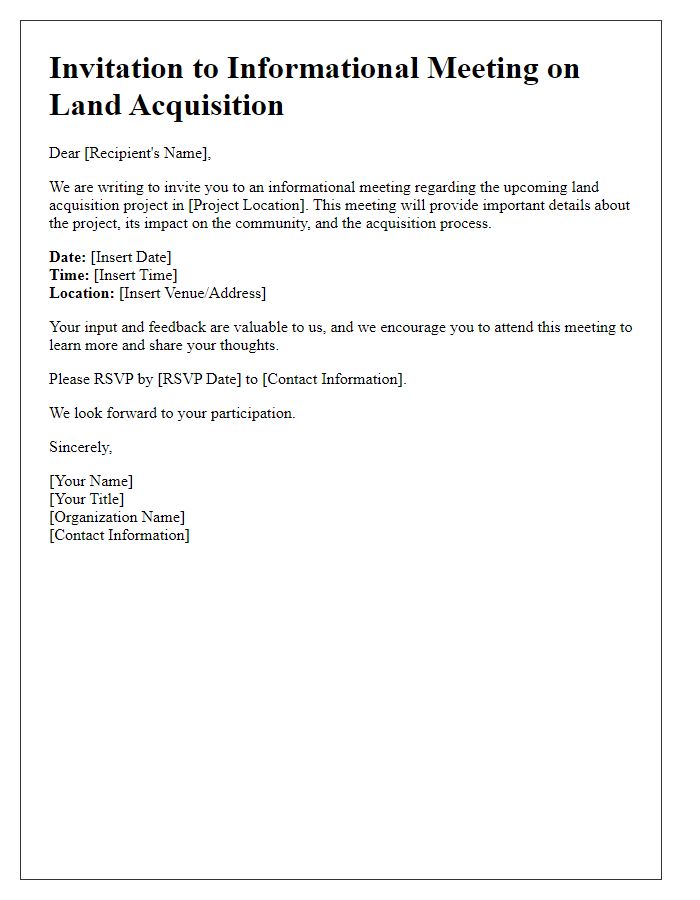


Comments